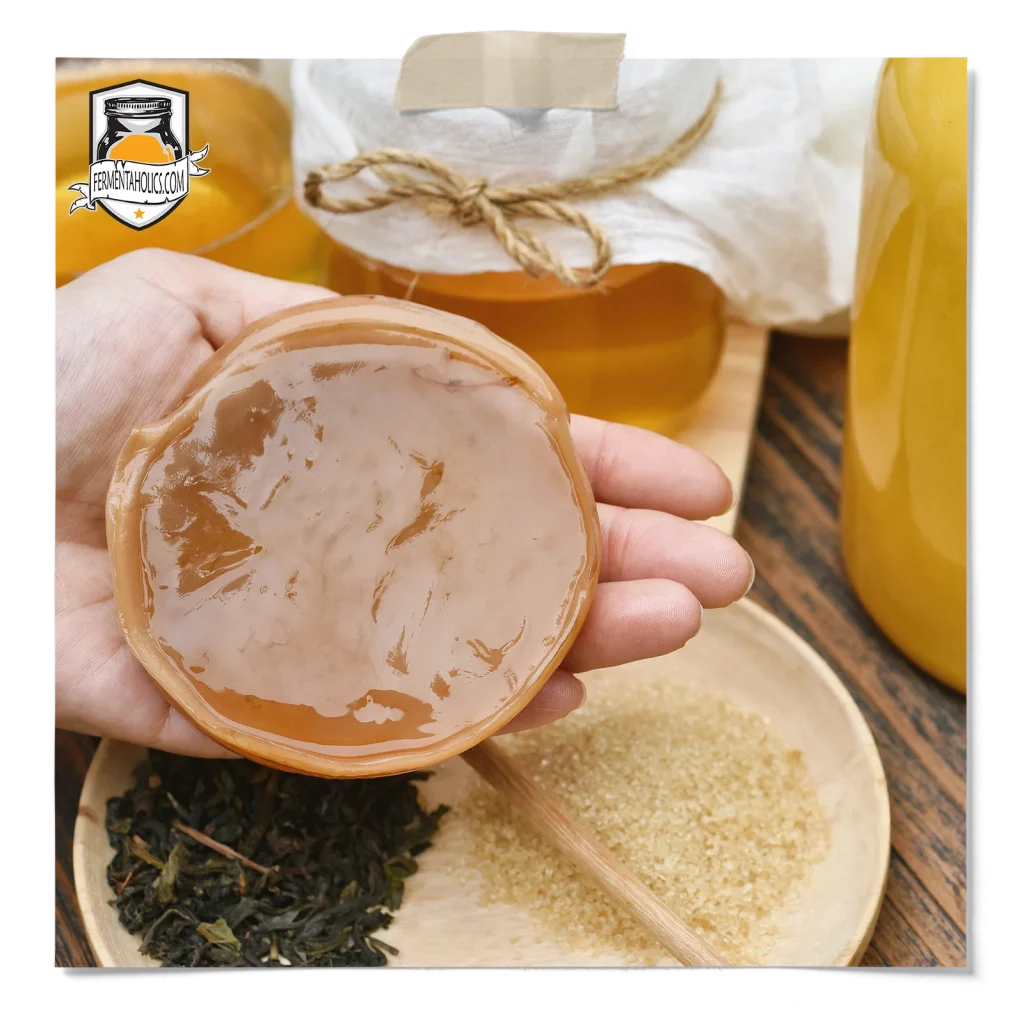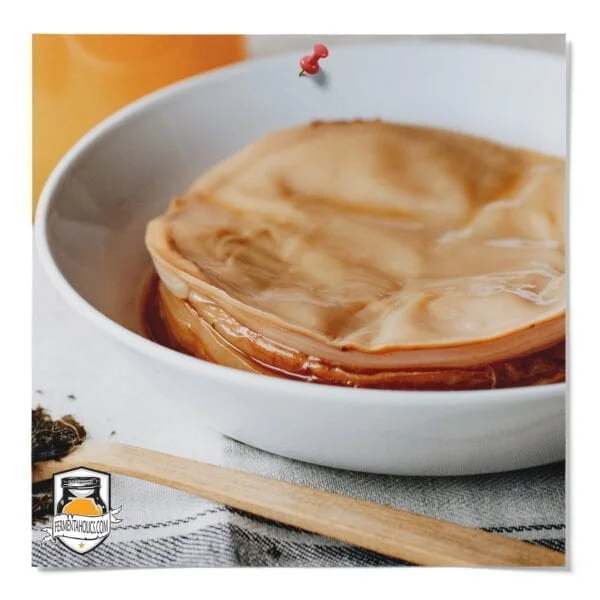
When you first start making kombucha, it’s easy to feel overloaded by all the information out there. We get a lot of questions from new brewers about what a SCOBY pellicle should look like or be doing during fermentation. A big one is why their SCOBY pellicle isn’t moving or “swimming” around in the jar, which often leads to worry that nothing is happening or even that the SCOBY is dead.
Fermentation can be complex, but a lot of the confusion comes from how kombucha is described. Certain terms make it sound like the SCOBY pellicle is an actual living being, so you might expect to see it actively doing things during fermentation. This sets the wrong expectations for what happens in the jar. For example, you’ll often see phrases like “kombucha mother” or “baby SCOBY.” It’s easy to understand how that could make people think the SCOBY pellicle itself is a living individual, when in fact it isn’t.
With this assumption in mind, many new brewers expect the SCOBY pellicle to move around in the jar, almost like a jellyfish, or get concerned with its position in the jar, thinking if it’s not moving, or sunk to the bottom, it’s dead. But that’s not how it works.

The SCOBY pellicle — the disk or puck, whatever you want to call it — is not alive. It’s a non-living structure made of cellulose. What is cellulose, you ask? It’s a natural fiber created by certain bacteria in the kombucha culture. It’s also common in plants, where it makes up the cell walls and gives them structure and strength. A common example of cellulose is cotton, and just like a cotton T-shirt can’t be alive, neither can a SCOBY pellicle.
To me, the best way to picture this is by thinking of a school bus versus the children inside it. The bus isn’t alive, but the children inside are. In the same way, the SCOBY pellicle or disk you see in the kombucha culture isn’t alive, but the bacteria and yeast within the SCOBY pellicle are alive. Taking it a step further, we also have the kombucha starter tea, and inside the liquid starter tea is where the majority of the bacteria and yeast in the kombucha culture are found.
When you start a new batch of kombucha, you begin fermentation by inoculating the sweetened tea mixture with your kombucha culture. This happens when you pour the SCOBY pellicle and starter tea into the sweet tea. To the naked eye, it’s rather uneventful, but at the microbial level, the microbes quickly disperse throughout the sweet tea. You can’t see this happening, but it’s similar to adding food coloring to water — it spreads throughout the liquid. Once the sweet tea is inoculated, the yeast and bacteria get to work on the available sugars, as they are now distributed throughout the liquid. No matter where the SCOBY pellicle ends up, it makes no difference to the microbes doing the fermentation.
That’s why it doesn’t matter if your SCOBY floats, sinks, or hangs out in the middle. Its position has nothing to do with how well your kombucha is fermenting and shouldn’t be used as an indicator of the health of the batch.
If you’re ever left wondering whether fermentation is happening or not, the answer is pH. This will tell you what’s going on at the microbial level, instead of guessing based on what you see — or don’t see. If you’re new to this, I highly recommend checking out our post on kombucha and pH. It explains kombucha’s pH and how to use it to track your brew’s progress any time you’re in doubt.
So there you have it — I hope this answers your questions and puts your concerns to rest. Now that we’ve cleared this up, let’s get back to the fun part: planning how to flavor your batch. Be sure to check out our kombucha recipes and flavors section for ideas and inspiration, or pick up some of our kombucha flavoring brew blends. Just add a little to each bottle and let the flavor and carbonation develop.
$15.99 Original price was: $15.99.$14.99Current price is: $14.99.
Out of stock product
$14.99 Original price was: $14.99.$13.99Current price is: $13.99.
In stock
$14.99 Original price was: $14.99.$13.99Current price is: $13.99.
In stock
$11.99 Original price was: $11.99.$9.99Current price is: $9.99.
In stock
$17.99 Original price was: $17.99.$16.99Current price is: $16.99.
Out of stock product
$49.99 Original price was: $49.99.$41.95Current price is: $41.95.
In stock
$18.95 Original price was: $18.95.$16.95Current price is: $16.95.
In stock
$14.99 Original price was: $14.99.$13.49Current price is: $13.49.
In stock
$12.99 – $24.95Price range: $12.99 through $24.95
